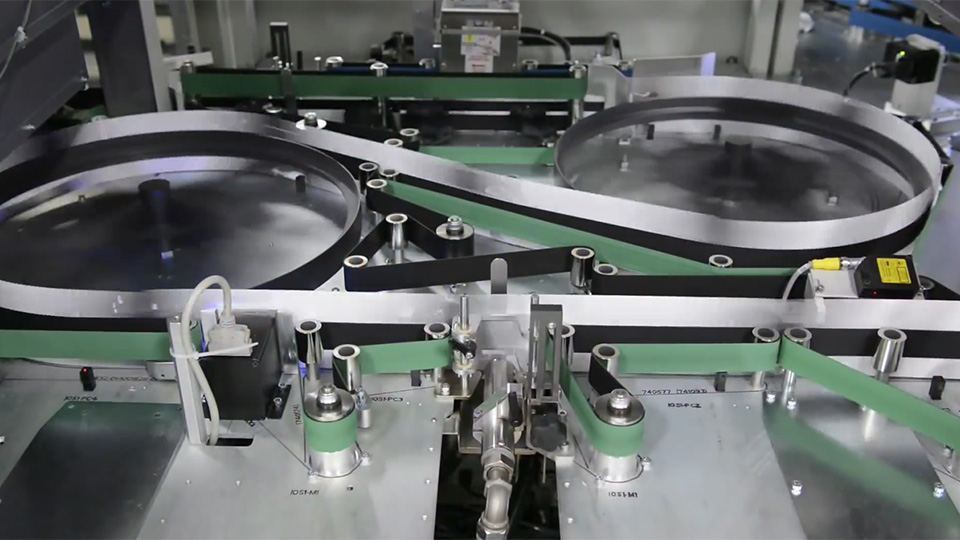Equipment Manufacturers Support the Industry
In 1800, when the Post Office moved its headquarters from Philadelphia to the new capital in Washington, D.C., only two wagons were needed to carry all the records, furniture, equipment and supplies needed to run the organization.
It would take far more than a couple of wagons to carry the equipment and supplies necessary today to support the operations of the mailing industry and the Postal Service more than 200 years later.
Basic Equipment for Mailing Services
There are three essential pieces of equipment for a commercial mailing operation – tabbers1, address printers, and inserters. Equipment purchases depend on the type, run length, and frequency of mailings being processed. It may take $30,000 to outfit a company with these machines in order to operate a small or start-up operation. Larger operations may require purchasing $200,000 worth of equipment to handle more complex mailing jobs.
Tabbing equipment is required for mass mailings of brochures, newsletters, double postcards, booklets, and other self-mailers. Simple tabletop models can apply one tab, while more substantial models can apply up to three 1 ½ ” tabs in-line in order to meet new U.S. Postal Service specifications.
Not all mail pieces are addressed on a digital press. Those using a commercial printer require inkjet addressing equipment that can print fixed text, variable text, and postal barcodes like the Intelligent Mail barcode. There are many approaches to inkjet addressing, including moving portable inkjet heads in-line with folders, stitchers, and inserters, which are solutions favored by larger-volume direct mail and publication printers. With base, feeder, dryer, controller, and conveyor, new thermal inkjet models are $35,000–$45,000, faster continuous inkjet models $50,000–$60,000, and the fastest binary array models $100,000-plus. Tabletop units are considerably less.
An inserter is usually the largest and most expensive piece of mailing equipment a company will own. It inserts folded sheets of paper into an envelope, and then seals the envelope. Inserters have different speeds, i.e., the number of mailings they process per hour. An inserter can cost anywhere from $8,000-$500,000, depending on its bells, whistles and speed.
Mailing is not a simple business. However, the equipment needs are fairly clear at the outset. New businesses require at least an inserter to get started. Many printers will invest in all three equipment types to provide as much mailing flexibility as possible.
Wait, There is More…Much More
A mailing operation of any size that does not want to wear out its employees’ tongues needs envelope sealers for outgoing mail. Some are built into higher end inserters. If not, an additional machine is required. Depending on the kind of mailings prepared, folding machines may also be needed. Addressing machines and labels are needed to print addresses. Somewhere during the process, mail must be weighed, which means scales are required. Then postage must be applied, using stamp meters or other devices. If the business is to handle larger envelopes, periodicals (flats), or packages, even more machinery is required.
Mail Processing Equipment
Larger operations use automated sorting machines. Then there are the same machines used by the Postal Service for mail processing. Some of this equipment is very large and long – basketball courts size or more. These machines include Flat Sequencing Systems, Delivery Barcode Sorters, as well as parcel and bundle sorters. High speed letter sorting machines, aided by sophisticated electronic scanning, handle thousands of pieces of mail per hour. They are connected by modern materials handling equipment, including conveyor belts and other systems. High-tech electronics networks connect the equipment with centralized processing controls and information systems. Robotics and artificial intelligence will continue to improve existing systems.
The Internet of Things
The intricate dance of mail processing continues to require more from the mail piece itself. “Intelligent mail” (mail that is marked with codes and scanned) “talks” to machines, which in turn “talk” to materials handling equipment and trucks through a sophisticated information network. This reduces costs, improves services and paves the way for new systems to be developed.
Mail Boxes and Post Office Boxes
New technology is also shaping the future of delivery. This can mean greater delivery flexibility, based on advanced notification. This flexibility can take the shape of postal electronic systems that send messages to your designated mobile device to let you know what mail you are getting and when it will arrive. You could then choose to designate alternative locations for that mail to be delivered.
Vehicles
Postal delivery vehicles are seen in every community in the nation and along almost every road. The Postal Service has the largest alternative-fuel capable fleet in the nation and has supported testing many different approaches. As of 2016 it is preparing to purchase hundreds of new vehicles to replace the boxy Long Life Vehicles (LLV) that you see on your streets. These new vehicles are likely to be equipped with communications technology to make sure that the mail in each vehicle is matches the route it serves, and help the mail carrier communicate with the delivery office to upload delivery verification scans, confirm pick-up, and relay other relevant information. The delivery office will be able to track the carriers on their route and inform them of route changes, pick-up request and other relevant information.
USPS and its Suppliers Continue to Work Together
Many of the Postal Service’s supply firms are household names. They include sophisticated companies that sell equipment and services not only to the USPS, but also to postal organizations and mailers around the world. This cross-fertilization brings new ideas to the industry and the Postal Service, and offers opportunities to try new approaches to all aspects of mail processing and invest in developing exciting new long-term projects.
1) Tabbers are machines that automatically apply mail tabs or seals to a variety of mail pieces.

